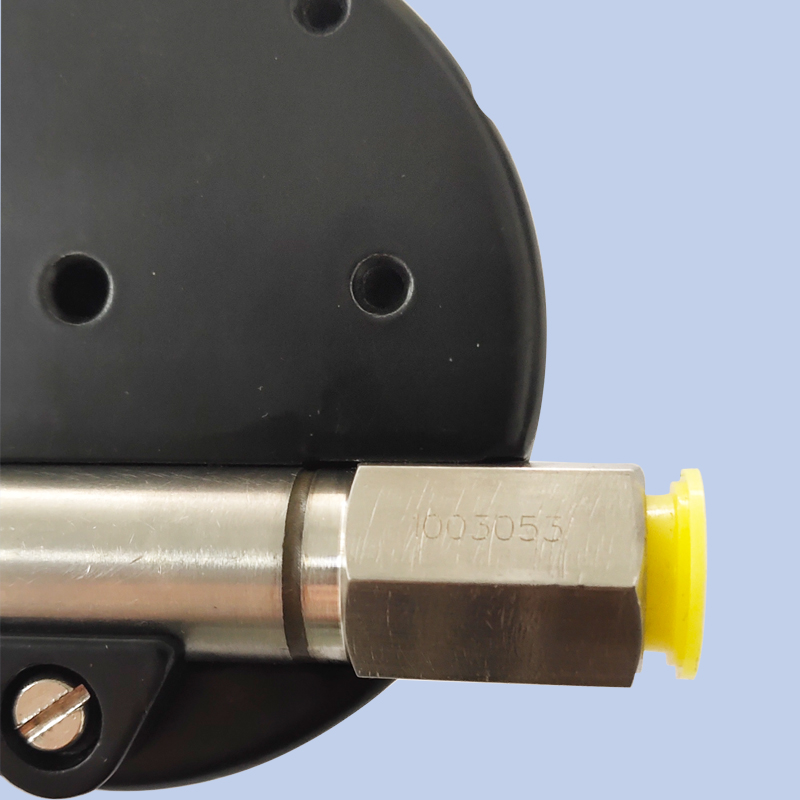
Oct . 13, 2024 17:47 Back to list
flange diaphragm seal pressure gauge product
Understanding Flange Diaphragm Seal Pressure Gauges
Pressure measurement is a critical aspect in various industrial processes, ensuring that systems operate safely and efficiently. Among the different types of pressure measurement devices, the flange diaphragm seal pressure gauge stands out due to its robust design and reliability. This article delves into its significance, functionality, and applications, shedding light on why it is a preferred choice in many industries.
What is a Flange Diaphragm Seal Pressure Gauge?
A flange diaphragm seal pressure gauge is a specialized instrument designed to measure the pressure of fluids and gases in various industrial applications. At its core, it combines a diaphragm seal and a traditional pressure gauge. The diaphragm acts as a barrier between the process fluid and the pressure sensing element, allowing for accurate measurements while protecting the gauge from harsh operating conditions.
Components and Construction
The primary components of a flange diaphragm seal pressure gauge include the diaphragm, the flange, and the pressure gauge itself. The diaphragm is usually made from corrosion-resistant materials such as stainless steel, enabling it to withstand extreme temperatures and aggressive chemicals. The flange serves as a mounting interface, which allows easy installation onto pipelines or tanks, creating a secure and leak-proof connection.
When pressure is applied to the diaphragm, it deflects, which in turn moves a sensing element within the gauge
. This displacement is translated into a readable pressure value, providing users with crucial data on the process conditions.Advantages of Using Flange Diaphragm Seal Pressure Gauges
flange diaphragm seal pressure gauge product

1. Protection Against Corrosive Environments One of the primary advantages of using a diaphragm seal is that it shields the internal components of the gauge from corrosive or viscous fluids. This not only prolongs the life of the gauge but also ensures ongoing accuracy in measurements.
2. Accuracy and Reliability These gauges provide highly accurate pressure readings, even under varying process conditions. Their design minimizes the risk of clogging, which is commonly seen in standard pressure gauges when measuring dirty or viscous fluids.
3. Versatility Flange diaphragm seal pressure gauges can be used in a wide range of applications, including chemical processing, oil and gas, pharmaceuticals, and food and beverage industries. They are suitable for both liquid and gas measurements, making them versatile tools in any industrial setting.
4. Ease of Maintenance With their sturdy design and protective diaphragm, these gauges require minimal maintenance compared to other types of pressure measurement devices, decreasing downtime and maintenance costs.
Applications
Flange diaphragm seal pressure gauges find applications across various sectors. In the chemical industry, they are essential for monitoring the pressure of reactive substances without risking contamination. In the oil and gas sector, these gauges ensure safe operations by providing accurate pressure readings in pipelines. Similarly, in food and beverage production, they play a crucial role in ensuring hygiene and safety standards are met.
Conclusion
In summary, flange diaphragm seal pressure gauges are invaluable tools in modern industrial applications. Their ability to provide accurate, reliable, and safe pressure measurements makes them suitable for various environments, especially those involving corrosive or viscous fluids. As industries continue to innovate and strive for efficiency and safety, the importance of these gauges cannot be overstated. Investing in quality flange diaphragm seal pressure gauges is a step towards enhancing operational integrity and facilitating precise process control.
-
High-Precision Mass Diaphragm Pressure Gauge - Reliable & Durable Solutions
NewsJun.10,2025
-
Explain Diaphragm Pressure Gauge Expert Guide, Top Manufacturers & Quotes
NewsJun.10,2025
-
Affordable Differential Pressure Gauge Prices in China Top Manufacturers
NewsJun.10,2025
-
Reliable Water Fire Extinguisher Pressure Gauges for Safety
NewsJun.10,2025
-
Durable Diaphragm Protection Pressure Gauges Get Quote
NewsJun.09,2025
-
WIKA Differential Pressure Gauge with Switch Reliable Monitoring & Control
NewsJun.09,2025
